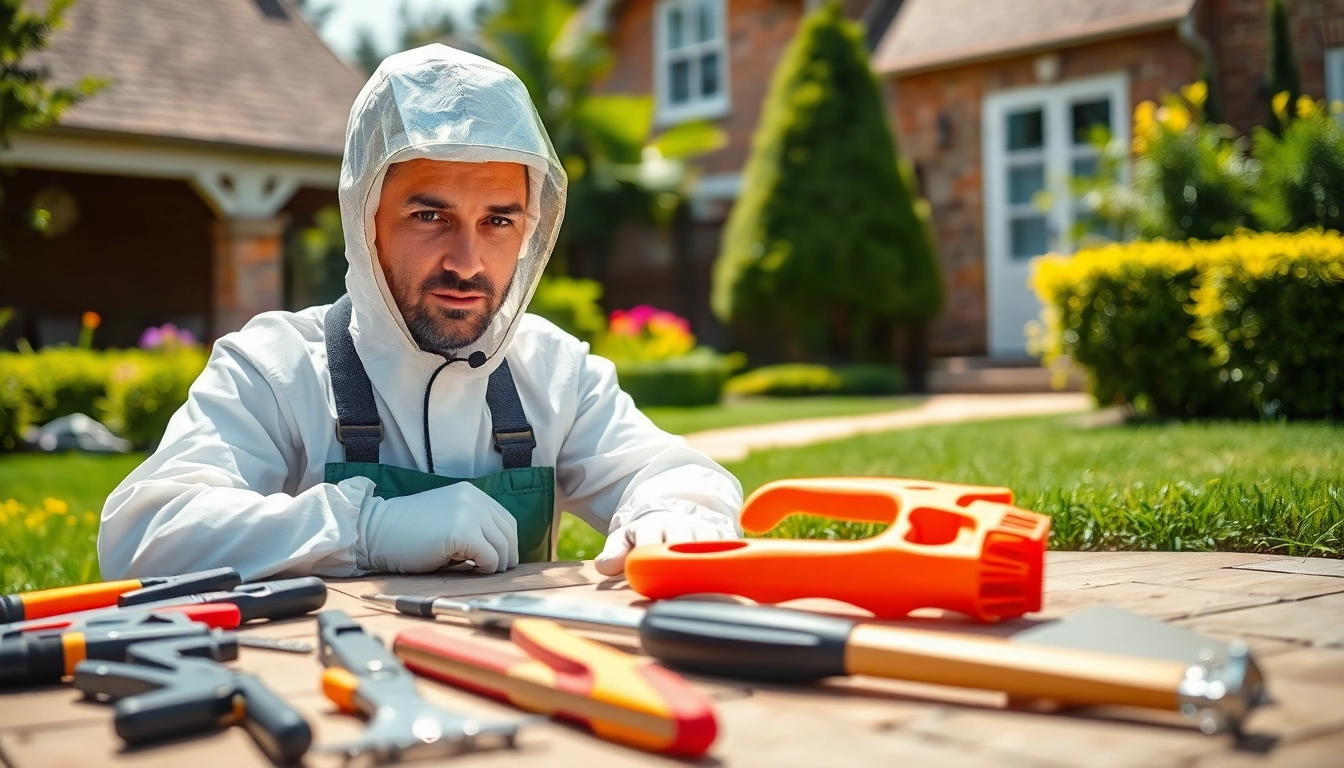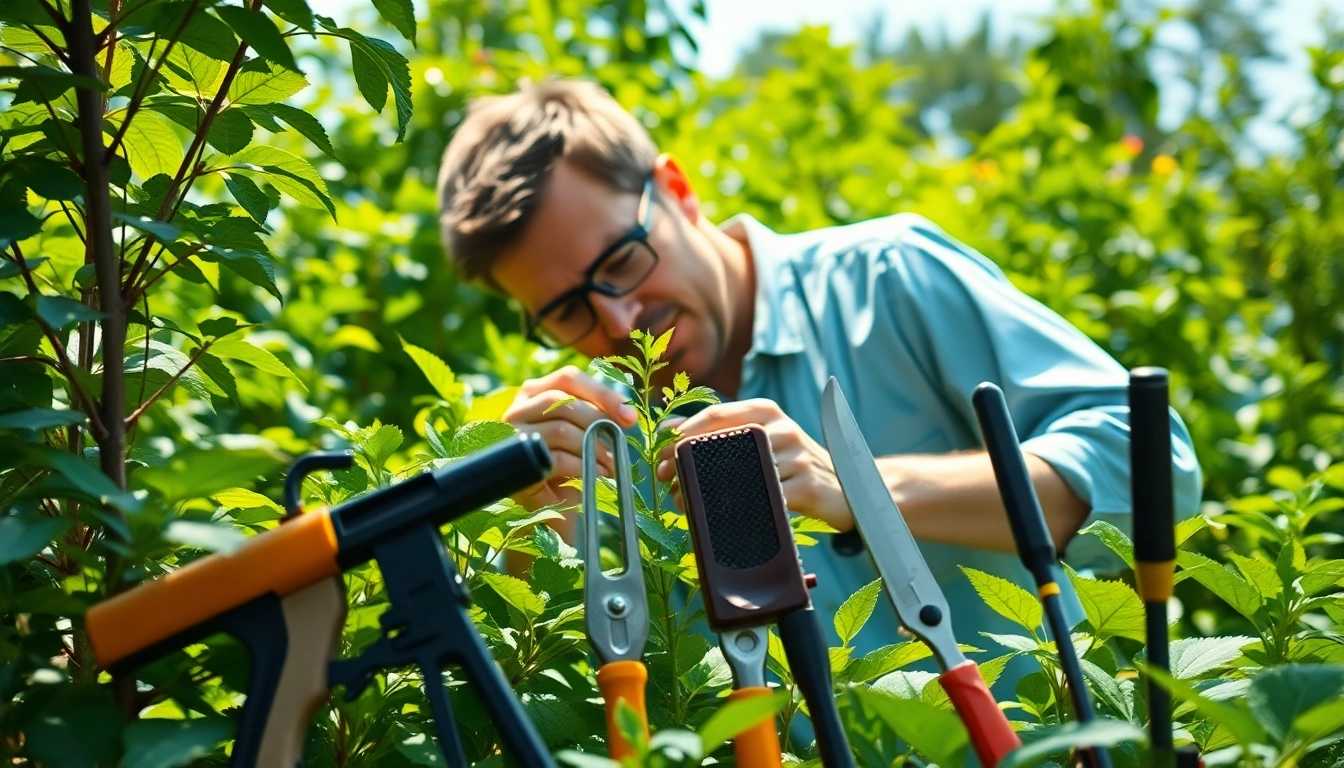
The Importance of Pest Management
Pest management is a critical practice that helps maintain public health, agricultural productivity, and environmental integrity. Whether in residential areas, commercial properties, or agricultural lands, the presence of pests can pose significant challenges. An effective pest management strategy provides not just a means of addressing current pest problems but also serves to prevent future infestations. To effectively implement pest management solutions, it’s essential to understand its importance, benefits, and the common issues homeowners face. Additionally, it opens the door to economic implications, shaping the way households and businesses invest in pest control measures.
Defining Pest Management and Its Benefits
Pest management refers to the comprehensive approach of managing pest populations in a manner that minimizes risks to human health and the environment. This involves a suite of techniques, including prevention, monitoring, and control methods, which can vary based on the type of pest and the specific environment.
One of the primary benefits of effective pest management is the safeguarding of public health. Many pests, such as rodents and insects, can carry diseases that pose serious health risks. By controlling these populations, communities can reduce the risk of disease transmission. Furthermore, implementing preventive measures can lead to economic savings, as addressing an infestation in its early stages is often less costly than dealing with an established population.
Common Pest Problems Faced by Homeowners
In residential settings, homeowners commonly deal with various pests, including insects like ants, cockroaches, and termites, as well as rodents such as rats and mice. The presence of these pests can lead to discomfort, property damage, and health risks. For example, termites can compromise the structural integrity of homes, while rodents can chew through wires and insulation, leading to costly repairs.
Outdoor pests also present significant challenges. In gardens and landscapes, pests like aphids, caterpillars, and beetles can harm plants, reducing their aesthetic appeal and economic value. Recognizing these pest issues and implementing strategies for their control is essential for maintaining both the beauty of homes and the health of residents.
Economic Impact of Pest Infestations
The economic consequences of pest infestations are far-reaching, affecting individuals, families, and businesses alike. For homeowners, the cost of pest control can accumulate from both direct measures—like hiring professional exterminators—and indirect costs resulting from property damage and health-related issues. A survey conducted by the National Pest Management Association found that pests can lead to millions in damages across the U.S. alone.
On a larger scale, agricultural pest infestations can severely impact food production, causing farmers to lose crops and profits. This impacts food supply chains, inflationary pressures, and overall economic stability. Implementing effective pest management strategies is not just a personal concern; it’s a significant factor in ensuring economic wellness in our communities.
Methods in Pest Management
Integrated Pest Management (IPM) Explained
Integrated Pest Management (IPM) is an environmentally sensitive approach to pest management that emphasizes the use of comprehensive strategies. Rather than relying solely on chemical solutions, IPM involves a range of practices to manage pest populations sustainably.
IPM strategies often begin with careful monitoring and identification of pests. Accurate identification allows for tailored management approaches that are most effective for specific pest species. This method may include cultural practices, such as crop rotation or landscaping adjustments, that discourage pest proliferation without resorting to chemical interventions.
Cultural and Biological Control Approaches
Cultural control techniques can significantly reduce pest pressures by altering some aspect of the environment or management practices. For example, maintaining healthy soil through proper watering and fertilization can strengthen plants, making them less susceptible to pest infestations. In agriculture, crop rotation disrupts the life cycles of pests and pathogens, promoting a healthier ecosystem.
Biological control involves the introduction of natural predators or antagonists of pests. For instance, ladybugs and lacewings are commonly used to control aphid populations. This sustainable approach reduces reliance on chemical pesticides, benefiting the environment and public health.
Chemical Control: Best Practices
Chemical control of pests should never be taken lightly. While pesticides can be effective, their misuse can lead to health risks for humans and non-target organisms, including beneficial insects and wildlife. Best practices for chemical control include:
- Targeted Application: Apply pesticides only where necessary and in quantities that minimize environmental impacts.
- Integrated Timing: Use pesticides in conjunction with other pest management strategies, applying them only as a last resort.
- Safety Precautions: Always follow label instructions and safety protocols to mitigate risks associated with pesticide exposure.
Best Practices for Effective Pest Management
Regular Inspections and Monitoring
One of the best practices for effective pest management is conducting regular inspections and monitoring for signs of pests. This can involve visual inspections of areas known for infestations, such as kitchens and basements, using traps, and examining plants for pests. Consistent monitoring can help identify potential pest problems before they escalate, allowing for timely intervention.
Implementing Preventive Measures
Preventive measures are fundamental to reducing the likelihood of pest infestations. This can include practices such as sealing cracks and crevices to deny entry points, proper waste management to reduce food sources, and maintaining cleanliness in living and working spaces. In gardens, using companion planting can deter pests through natural means.
Educating Homeowners about Pests
Education is a vital element in successful pest management strategies. By informing homeowners about common pests, their behaviors, and prevention methods, individuals become empowered to take proactive measures. Workshops, informational brochures, and online resources can provide valuable insights into the importance of pest control and how residents can contribute to maintaining a pest-free environment.
Challenges in Pest Management
Common Misconceptions and Myths
Misinformation about pest management practices can lead to ineffective solutions and, at times, exacerbate the problem. One common misconception is that all pests are harmful; however, many insects play critical roles in our ecosystems. Understanding the balance of pest populations is essential for effective management. Additionally, the assumption that chemical treatments are always the most effective solution can lead to reliance on pesticides that may not address the root causes of infestations.
Resistance to Pest Control Methods
Another challenge in pest management is growing resistance among pest populations to chemical pesticides. Over-reliance on certain chemicals can lead to resistant strains, making it increasingly difficult to manage these pests. To combat resistance, it is crucial to integrate multiple management strategies and rotate different classes of pesticides to minimize exposure.
Environmental Concerns and Regulations
Environmental regulations play a significant role in pest management practices. Many regions have specific guidelines to ensure that pest control methods do not compromise human health or environmental integrity. Understanding and following these regulations is critical for professionals and homeowners alike to promote safe and sustainable pest management practices.
Future Trends in Pest Management
Technology’s Role in Pest Control
The future of pest management is increasingly intertwined with advancements in technology. Smart pest management systems now utilize data analytics and sensors to detect pest activity in real time, allowing for targeted interventions. Drones are also being used to monitor agricultural fields for pest hotspots, providing farmers with the information they need to act promptly.
Eco-friendly Solutions and Sustainable Practices
As environmental awareness continues to grow, there is a shift towards eco-friendly pest management solutions. Homeowners and businesses are seeking more sustainable practices that utilize natural pest repellents, organic pesticides, and humane traps. Developing integrated strategies that focus on sustainability not only benefits the environment but also meets the growing consumer demand for responsible pest management practices.
Emerging Research and Innovations
Research in the pest management field is continually evolving, leading to new insights and innovative practices. Studies are exploring the use of genetically modified organisms (GMOs) as a pest management strategy, along with advancements in microbial pest control using beneficial bacteria and fungi. Such innovative approaches hold promise for reducing reliance on synthetic chemicals and promoting healthier ecosystems.




